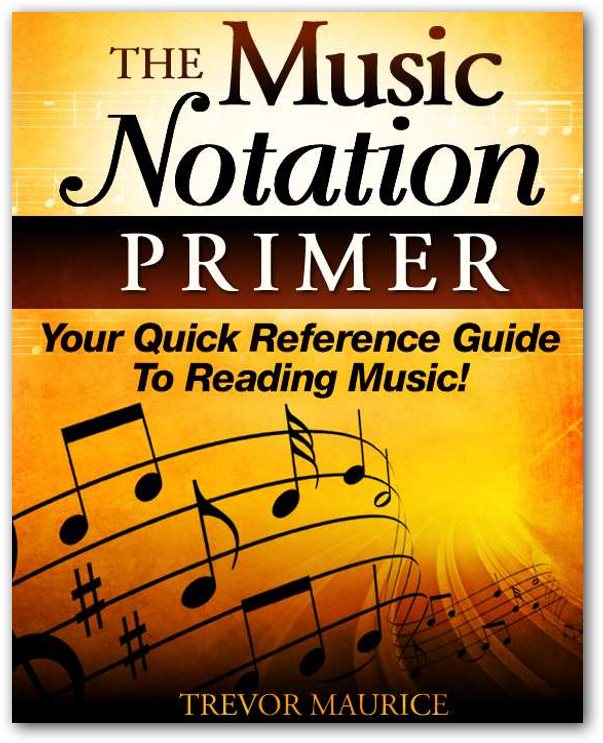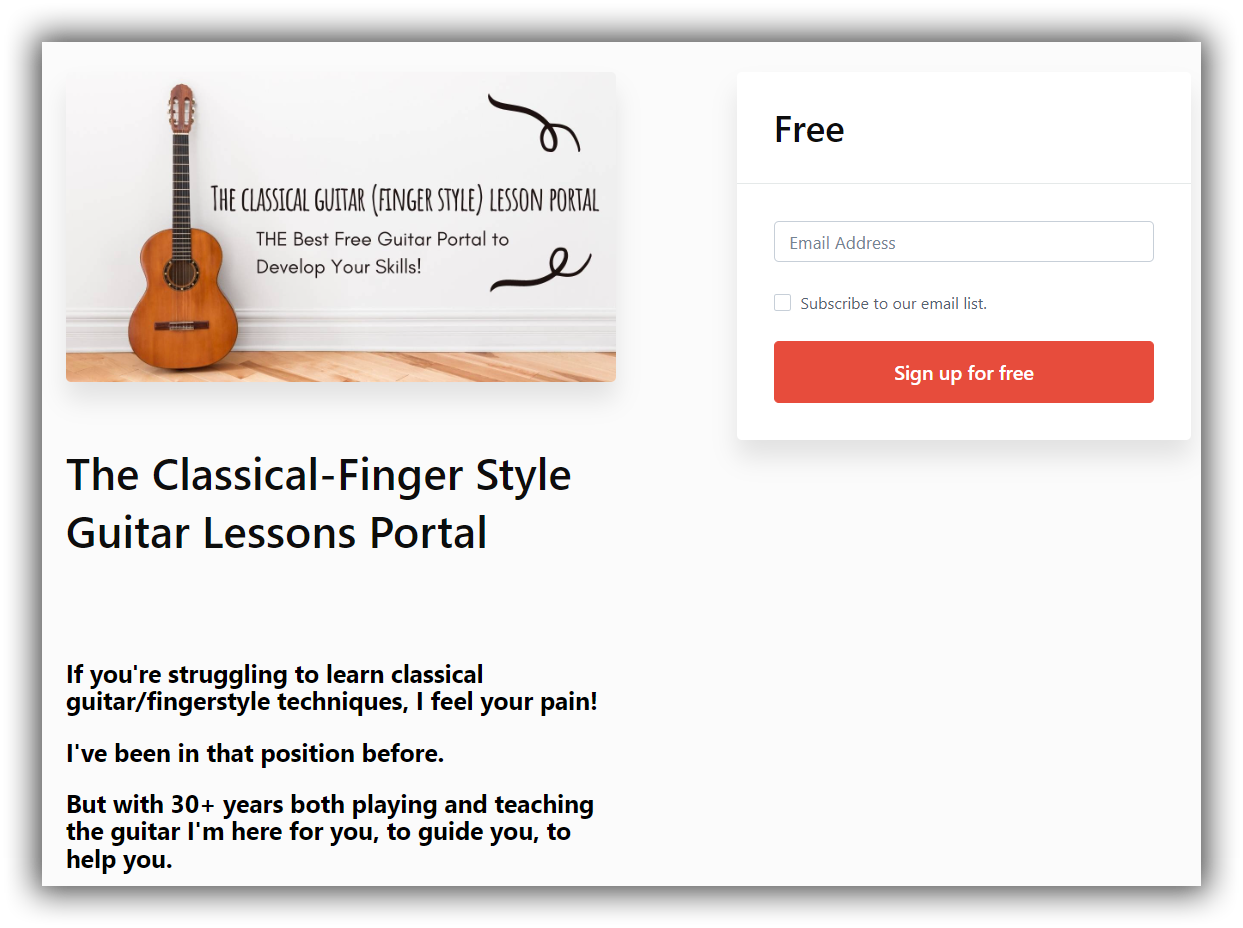- Home
- Classical Fingerstyle Portal
- 15 Actionable Guitar Lessons
- Classical Guitar Technique
- Guitar Lessons
- Beginner Lessons
- Guitar History
- The Renaissance Guitar
- Guitar Time Line
- Classical Guitar Blog
- Contact
- About Author
- Site Search
- Privacy Policy
- Site Map
- Classical Guitar Study Course 3.0
- Instant Classical Guitar Repertoire
- Classical Guitar Lessons For Beginners
Music Notation Primer
Music Notation Primer - Your Quick Reference Guide to Reading Music
The Music Notation Primer is useful because many people are often uneasy when it comes to learning music notation, yet it is the best tool we have to fully understand the composer’s intention for the performance of the music in question, at least in classical music.
The Music Notation Primer is useful because many people are often uneasy when it comes to learning music notation, yet it is the best tool we have to fully understand the composer’s intention for the performance of the music in question, at least in classical music.
With just a little perseverance and application, anyone can learn musical notation, thus opening up a world of joy and pleasure previously closed off to them.
To rely only on your ear or the use of tablature restricts you from fully appreciating music, in my opinion. Although both ear development and tablature are important tools in their own way, you should strive to have more “tools” in your armory—not less!
And understanding musical notation is a very powerful tool to get to the “heart” of a musical performance—one that everyone should strive for who is even remotely interested in music and our great instrument, the guitar!
Download Your Copy of "The Music Notation Primer"
 The Music Notation Primer
The Music Notation PrimerUnderstanding music notation has the following advantages:
This book will help you gain a basic understanding of music notation and set you on the road to finding out more about this fascinating subject and adding to your personal growth!
Communication: For musicians, music notation serves as a universal language. No matter the language or cultural background of the performers, it enables composers to convey their musical ideas exactly. Musicians who are familiar with notation may play and interpret other people's music perfectly.
Musical literacy: The structure of music notation offers a foundation for comprehending the many musical aspects, such as dynamics, harmony, rhythm, and melody. It aids artists in learning music theory and the connections between various musical aspects.
Reading sheet music allows musicians to explore a huge musical library and learn new pieces. You may study music from numerous genres, styles, and eras by being able to read notation. You may listen to all sorts of musical genres because of it.
Collaboration is made easier by the use of music notation. It allows for the proper performance of intricate compositions by a group of musicians without the need for memorizing or oral transmission. It enables orchestras and groups to coordinate their performances and provide a seamless musical experience.
Preservation: In order to keep musical traditions and creations alive across time, music notation is essential. It makes it possible to accurately record musical concepts, guaranteeing that they may be handed down through the generations. Future musicians will be able to study, interpret, and play music thanks to its preservation in notation.
Analysis and study: A useful instrument for analyzing and studying music is music notation. It makes it possible for musicians, composers, and musicologists to explore the works' structure, form, and stylistic components. It offers information on musical trends and procedures as well as assists in comprehending the composer's objectives.
Opportunities for employment: The music business offers a variety of positions for those who are familiar with music notation. Composers, arrangers, music educators, conductors, session musicians, and musicologists may all benefit from it. The ability to read music notation is a requirement for many music schools and universities.
Personal expression of musical ideas: You may use music notation as a means of personal expression. You may record and share your musical ideas with others by notating your creations, which will improve your composing abilities and help you successfully express your creative ideas.
A strong tool for individual creativity, music notation enables artists to express and realize their own musical ideas. Here are some areas where this is possible:
- Expression of musical concepts: With the use of music notation, you may give the melodies, harmonies, rhythms, and dynamics that exist in your head a physical shape. It gives you a means to precisely record your musical ideas so they may be transmitted to others and correctly maintained.
- Notating Your Composition: This allows you to preserve a lasting record of your musical ideas. This is particularly helpful since memory is prone to error and musical concepts are readily lost if not written down. You may save your creations using music notation for reference, study, or performance in the future.
- Sharing with others: Notation makes it easier to communicate your musical ideas to other artists, performers, or collaborators. You may supply sheet music that expresses your goals clearly rather than depending just on verbal explanations or demonstrations. This promotes cooperation and creates opportunities for performances or recordings by helping people understand and interpret your music more properly.
- Building composing abilities: Working with music notation aids in the development of your compositional abilities. You get a greater grasp of musical structure, shape, and orchestration by notating your creations. You may experiment with various musical concepts, examine how they relate to one another, and come at wise judgments about how best to structure your works.
- Expressing creative vision: Whether you are working with instrumentalists, singers, or a complete ensemble, music notation is a useful tool for expressing your creative vision to performers. It offers comprehensive guidelines for pace, dynamics, articulation, and other factors. Your compositions are more likely to be realized as you intended them if you properly communicate your ideas via notation.
- Music notation enables you to return and improve your creations over time. As your expertise and experience grow, you could find fresh approaches or methods to improve your job. Your works may be readily edited, revised, and expanded using notation, encouraging a constant process of creative advancement.
In conclusion, music notation is a potent instrument for individual creativity that enables you to successfully record, express, and develop your musical thoughts. You gain the ability to work with others, express your creative vision, and leave a long-lasting musical legacy.
While it is possible to create music without the ability to read or write notation, a musician's abilities, knowledge, and possibilities within the field of music are greatly increased by being able to comprehend and utilize music notation.
I hope you enjoy this resource I have made for you.
Here for you,
Trevor M.
P.S. Don't forget, you can now download a heap of F*R*E*E resources and lessons by joining the
"Classical-Fingerstyle Portal"...
Get more than even the Music Notation Primer...
Looking for more info on music notation? Go here...
Recent New Pages:
